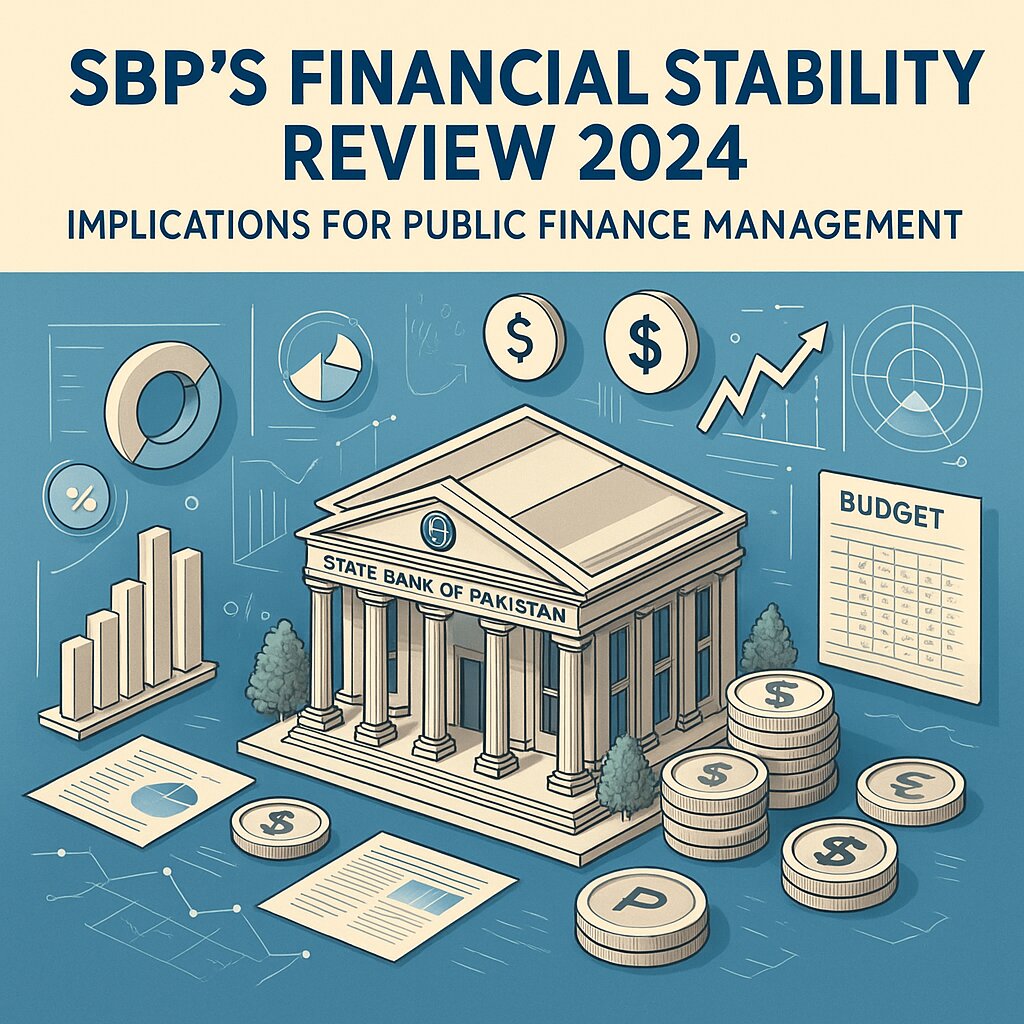
The State Bank of Pakistan’s *Financial Stability Review 2024* offers a critical lens through which to assess the symbiotic relationship between the country’s financial sector health and public finance management. As the financial sector grew by 17.8%—with banking assets expanding 15.8%—the report underscores both opportunities and challenges for fiscal policymakers navigating an economy in recovery. At the heart of this shift is the impressive comeback of private sector credit, which jumped by 29.8%—the highest increase we’ve seen since 2005. This surge has been fueled by monetary easing and tax incentives linked to advances-to-deposit ratios (ADR). While this signals renewed economic vitality, it also reveals vulnerabilities: deposit growth lagged at 9.1%, pushing banks toward borrowings and raising questions about sustainable funding. For the government, this underscores the urgency of maintaining fiscal discipline to avoid crowding out private investment, particularly as public debt remains a looming concern.
Fiscal consolidation efforts bore fruit in FY24, with the fiscal deficit narrowing to 6.8% of GDP and a primary surplus of 0.9% achieved for the first time in nearly two decades. Coupled with a current account surplus of $0.7 billion and bolstered foreign exchange reserves, these strides reflect improved macroeconomic stability. Yet, the sustainability of these gains hinges on prudent revenue policies. The ADR-linked tax measures, while stimulating private lending, highlight the delicate balance required in tax design—maximizing revenue without destabilizing financial institutions. As banks pivot toward riskier private loans to avoid penalties on government securities, regulators must ensure credit quality does not erode, which could strain public finances through bailouts or lost tax revenues.
The rise of Islamic banking institutions (IBIs), now constituting 20.6% of the banking sector, marks a structural shift with profound implications. Assets in IBIs grew by 23.1%, aligning with SBP’s Vision 2028 to transition toward a Shariah-compliant system. This expansion not only diversifies financial services but also opens avenues for broadening the tax base and enhancing inclusion, particularly in underserved regions. However, the sector’s rapid growth demands parallel regulatory upgrades to mitigate risks unique to Islamic finance, such as asset-liability mismatches. Meanwhile, microfinance banks (MFBs)—critical for poverty alleviation—face mounting stress, with non-performing loans rising to 9.7% and capital adequacy ratios plummeting to 2.6%, far below the 15% regulatory threshold. Strengthening MFBs is imperative to prevent exclusion of low-income groups, whose economic participation is vital for equitable growth.
Non-bank financial institutions (NBFIs), which saw assets swell by 80%, emerged as a bright spot, driven by mutual funds and investment firms. Their growth diversifies funding sources, reducing systemic reliance on traditional banks and offering innovative financing tools for infrastructure and SMEs. For public finance managers, this presents an opportunity to channel investments into high-impact projects without exacerbating sovereign debt. Yet, the sector’s opacity requires tighter oversight to prevent speculative risks.
Regulatory reforms, including amendments to the Banking Companies Ordinance and the Deposit Protection Corporation Act, further solidify financial stability. By designating SBP as the resolution authority and raising deposit protection limits, these measures enhance public trust—a cornerstone of financial system resilience. For the government, a stable banking sector translates to lower borrowing costs and reduced contingent liabilities, freeing resources for development spending.
Looking ahead, the interplay between financial stability and public finance will define Pakistan’s economic trajectory. Sustaining primary surpluses, optimizing tax policies, and leveraging Islamic finance’s potential can fortify fiscal buffers. Simultaneously, addressing MFB vulnerabilities and harnessing NBFIs’ growth will ensure inclusive progress. As global headwinds—from geopolitical tensions to commodity price volatility—test Pakistan’s resilience, the SBP’s findings reinforce that sound financial governance is not just a regulatory mandate but a fiscal imperative.
*This article was published on Publicfinance.pk.*
*Source: Webresearch
